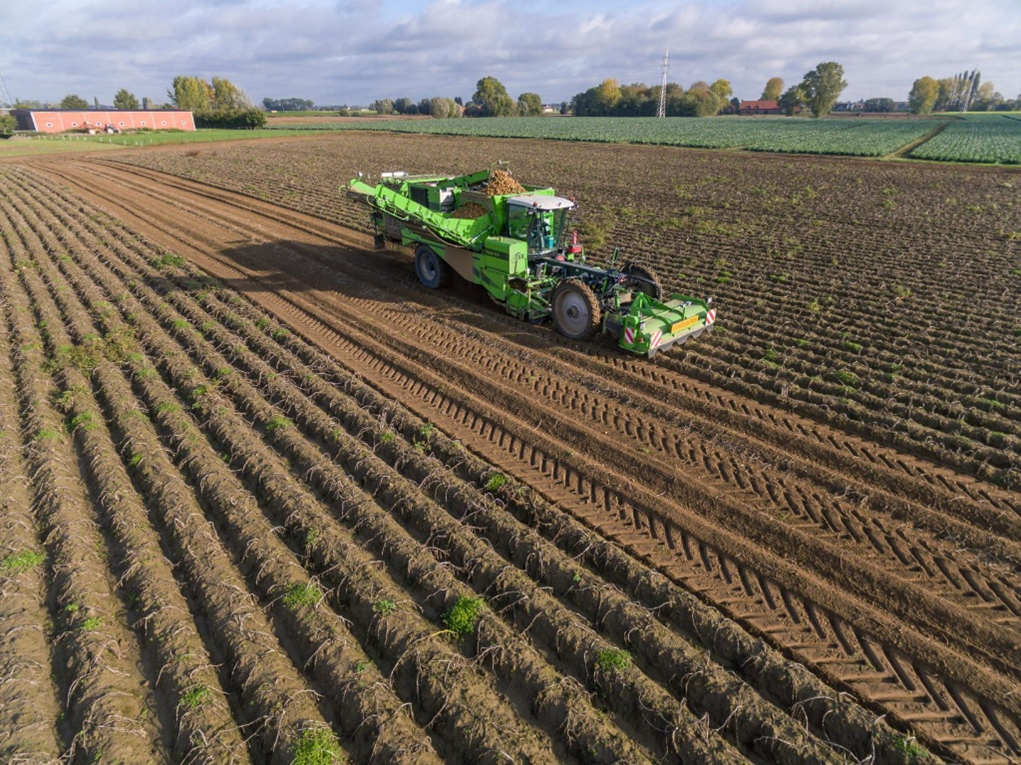
In this edition of our interview series, we catch up with Bart Beusen at VITO to learn more about pilot 3.4.
Can you tell us a bit about yourself, your organisation and your involvement in the DEMETER project?
Hi, my name is Bart Beusen, I’m a researcher/data scientist at the remote sensing department of VITO. My main interest lies in Machine Learning and artificial intelligence for vision and remote sensing. Together with my colleagues Isabelle Piccard and Jurgen Decloedt, we lead pilot 3.4 which is focused on decision support for potato farmers and for the potato processing industry. Machinery manufacturer AVR (Belgium) is our partner in this pilot. AVR implements the yield measurements on their harvesting machines, and collects all data wirelessly in their AVR Connect application.
VITO is a Flemish research institute, active in many fields (chemistry, materials, energy) but always with a clear focus on sustainable practices. At the remote sensing department, we operate the ground segment for the Proba-V satellite, and offer Sentinel products for Belgium and selected parts of Europe. Our group is focused on using remote sensing data for agricultural purposes. One of our flagships is the WatchItGrow application (WIG – https://watchitgrow.be/en ), providing information and services to potato farmers in Belgium.
WatchITgrow uses remote sensing data (Sentinel 2, Copernicus program), combined with local meteo and soil data, to inform farmers via a user-friendly web application on the status of their crops and on expected yield. We also generate task maps for variable rate planting, fertilization, irrigation and haulm killing.

WatchItGrow webapplication for visualization of Satellite data and crop growth data
AVR Connect is the recently started IOT cloud platform that collects data from the AVR field machinery (potato planters, yield sensors on the potato harvesters) using 4G communication, and makes the data available to third parties. Geotagged yield data are collected at a frequency of 1Hz, which leads to very detailed yield maps.
What pilot cluster and pilot project are you involved in/leading?
We are involved in pilot cluster 3, we are leading the pilot 3.4 “Open Platform for Improved Crop Monitoring in Potato Farms”.
What is the objective of the pilot project?
This pilot aims at integrating field machinery data with remote sensing, meteo and soil data on the WatchITgrow (WIG, watchitgrow.be) platform. The field data (planting date, planting distance, detailed yield information) is an important source of information for the calibration and validation of the analytical crop models in WIG that use satellite data, meteo data and soil information as inputs to model crop growth and predict yields.
What approach are you taking?
The detailed in-field data is a crucial source of information for the calibration and validation of the physical (non-ML) crop growth models. Additionally, the amount of data that will be collected allows us to explore the use of machine learning models for crop modelling and yield forecasting, using a purely data-driven model instead of manually fine-tuned physical models.
The enhanced crop growth models will be used to give advice to farmers for the optimization of field management practices (optimal harvest date, variable rate haulm killing, variable rate fertilization, irrigation advice).
What other stakeholders are involved in the pilot?
Next to our pilot partner AVR, the Belgian Farmers’ Association “Boerenbond” and the Belgian potato trade & processing industry association “Belgapom” are involved as partners in the WIG platform. Other research and sector organisations are indirectly involved, but could benefit from the interoperability and data format standardization put forward in DEMETER: ILVO (Flanders Research Institute for agriculture, fisheries and food) who is operating the DjustConnect datahub and research centres INAGRO (Research in Agriculture and Horticulture), PCA (Testing Center for potato farming), CRA-W (Walloon Agricultural Research Center). Also the contractors that own and operate the AVR harvesting machines commissioned by the farmers, are affected since machinery with data collection abilities provides a benefit for the farmers.
What are the expected outcomes of the pilot project?
We expect that the large amount of input data from the planting and harvesting machines will allow us to improve our crop growth models and make better predictions on yield a few weeks before harvesting. Thanks to the increased detail of the machinery data (one yield measurement per second) we will be able to differentiate and analyze different zones within the field and generate yield predictions at zone level instead of at field level.
The analysis of the yield data together with satellite, weather and soil data will improve our knowledge on which parameters have the highest impact on yield. In the longer term this should allow us for instance to provide better irrigation and fertilization advice throughout the growing season.


